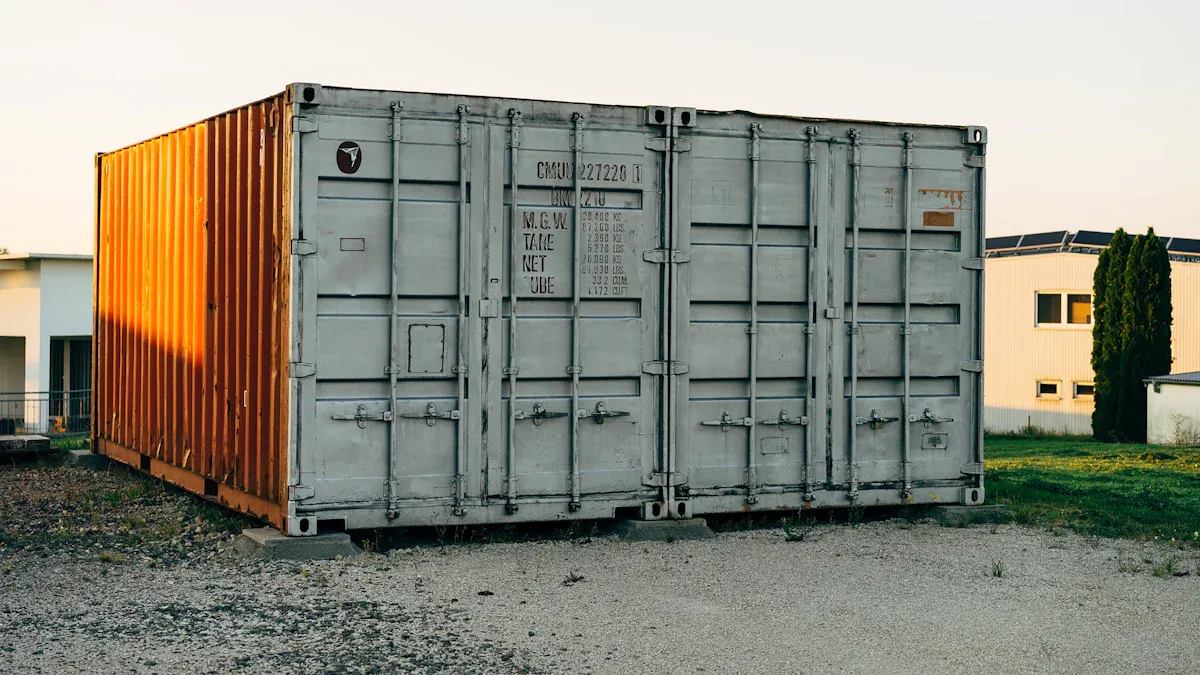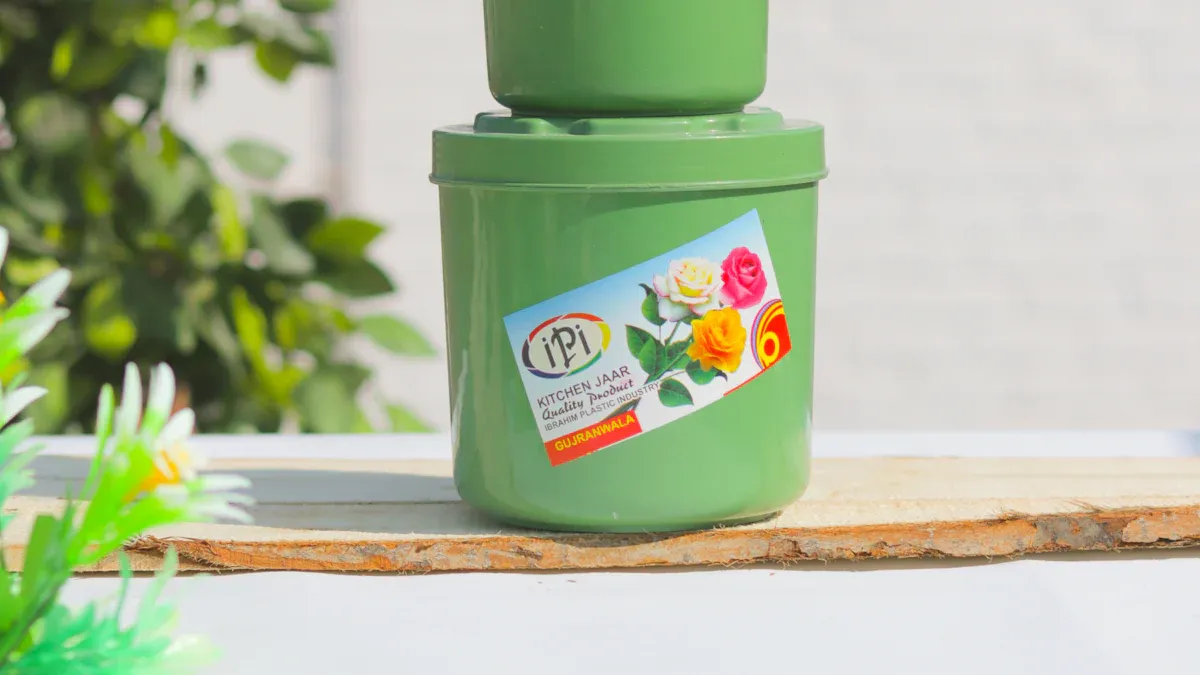
You can prevent warpage in containers by focusing on the right factors. Poor-quality plastic and improper design often lead to distortion, especially in food storage. Uneven cooling during production also impacts durability. By understanding these causes, you can maintain the shape and functionality of your plastic containers for longer use.

The quality of plastic plays a significant role in preventing warpage in containers. Low-grade materials often shrink unevenly during the cooling process, leading to distortion. You should always choose containers made from high-quality, durable plastic to minimize this issue. Manufacturers often use advanced techniques to reduce shrinkage, but poor material selection can still result in defects.
Research has shown that specific factors, such as packing pressure and melt temperature, directly affect shrinkage and warpage. For example, studies like the ones listed below highlight the importance of optimizing these parameters:
| Study Title | Key Findings |
|---|---|
| Analysis of Warpage and Shrinkage for an Injection Molded Component Using Flow Analysis Software | Identified packing pressure and melt temperature as significant factors affecting warpage and shrinkage. Utilized Taguchi methods and ANOVA for optimization. |
| Effects of Injection Process Parameters on the Warpage of Thin-walled Plastic Parts | Investigated how various injection process parameters influence the warpage of thin-walled plastic parts, providing empirical evidence on quality issues. |
| Experimental investigation of plastic part defect from plastic injection molding machine | Offered empirical evidence on defects from injection molding, including warpage and shrinkage, highlighting quality issues. |
By understanding these findings, you can make informed decisions when selecting containers for food storage or other purposes. High hygiene standards also depend on using materials that resist warping and maintain their shape over time.
Uneven cooling during the manufacturing process is another major cause of warpage in containers. When plastic cools at different rates, it creates internal stresses that distort the final shape. This issue often arises due to poorly designed cooling systems or inconsistent temperature control.
Studies have identified several factors that contribute to this problem:
- Uneven cooling during the injection molding process leads to warpage deformation, affecting the final shape and dimensional accuracy of molded parts.
- Warpage can cause dimensional inaccuracies, resulting in parts that do not meet required tolerances and specifications.
- Thermal warpage deformation occurs due to temperature differentials across the molded part, exacerbating the warpage issue.
- Factors such as cooling rates, temperature distribution, and mold cooling channel design significantly influence warpage.
To address this, manufacturers have developed advanced cooling profiles and mold designs that ensure uniform temperature distribution. These innovations help prevent storage container condensation and reduce the risk of moisture buildup, which can compromise hygiene and safety.
Environmental conditions and how you use containers can also lead to warpage. Exposure to extreme temperatures, such as leaving containers in direct sunlight or freezing conditions, can weaken the plastic and cause it to warp. Additionally, improper stacking or overloading containers can create uneven pressure, distorting their shape.
To maintain the integrity of your containers, follow these tips:
- Store containers in a cool, dry place to avoid exposure to extreme heat or cold.
- Avoid overloading containers with heavy items, as this can cause stress and deformation.
- Use containers designed for specific purposes, such as food storage, to ensure they meet safety and hygiene requirements.
By adopting these practices, you can extend the lifespan of your containers and maintain high hygiene standards. Proper care not only prevents warpage but also ensures the safety of the items stored inside.
Choosing the right materials is the first step in preventing warpage in containers. High-quality plastic with consistent properties ensures better performance during manufacturing and daily use. Reinforcing materials with additives or fillers can further enhance their durability. For example, adding glass fibers to plastic increases its strength and reduces the risk of deformation.
To improve durability and minimize warpage, manufacturers follow these principles:
1. Consistent wall thickness prevents uneven cooling and reduces internal stresses.
2. Designing with minimal thickness lowers production costs and shortens cooling times.
3. Gradual transitions in wall thickness avoid weak points and stress concentrations.
4. Ribs and gussets reinforce thin walls without adding excessive material.
5. Selecting materials with properties suited to the desired thickness ensures better performance.
6. Using simulation tools helps optimize designs by predicting stress distribution and cooling behavior.
When you select containers made with these principles, you reduce the likelihood of warpage and improve their longevity. This approach also supports maintaining hygiene by ensuring the containers retain their shape and sealing capabilities over time.
The design of a container plays a critical role in its ability to resist warpage. Features like rounded corners, reinforced edges, and proper sealing mechanisms contribute to its structural integrity. Rounded corners distribute stress more evenly, while reinforced edges provide additional support against external forces. Proper sealing not only prevents leaks but also maintains the container's shape under pressure.
Manufacturers now use advanced computer-aided design (CAD) tools to create durable containers. These tools allow them to test different designs and identify potential weak points before production. For example, they can simulate how a container will respond to stacking, temperature changes, and heavy loads. This ensures that the final product meets high standards of durability and safety.
When choosing containers, look for designs that prioritize durability and proper sealing. These features not only prevent warpage but also help in maintaining hygiene and safety for food storage and other uses.
Proper storage practices are essential for preventing warpage in containers and ensuring their longevity. Storing containers in a cool, dry place protects them from extreme temperatures that can weaken the plastic. Avoid stacking containers unevenly or overloading them with heavy items, as this can create stress and lead to deformation.
To prevent cross-contamination, always clean and dry containers thoroughly before use. Sanitization is crucial, especially for food storage, as it eliminates harmful bacteria and maintains hygiene. Use containers with tight-fitting lids to ensure proper sealing and prevent leaks. Proper sealing also keeps contaminants out, preserving the safety of the stored items.
Here are some tips for maintaining hygiene and preventing cross-contamination:
- Wash containers with warm, soapy water after each use.
- Dry them completely to avoid moisture buildup, which can lead to mold growth.
- Store containers separately from raw or uncooked food to reduce the risk of contamination.
- Use containers specifically designed for food storage to ensure they meet safety standards.
By following these practices, you can extend the lifespan of your containers and maintain high hygiene standards. Proper care not only prevents warpage but also ensures the safety and quality of the items stored inside.

In 2025, breakthroughs in manufacturing have revolutionized how containers are produced. AI-driven injection molding now plays a key role in reducing defects like warpage. Machine learning algorithms optimize production processes, cutting losses from warpage by 40%. This technology ensures precision in shaping plastic, improving the quality and durability of containers.
Advanced simulation tools, such as Autodesk Moldflow, allow manufacturers to predict and prevent warpage before production begins. These tools analyze factors like mold temperature and injection time, which significantly influence the final product. For example, studies using Kriging models and Plastics Insight software have demonstrated how optimized conditions reduce warpage in items like phone covers.
By adopting these innovations, manufacturers create containers that maintain their shape and functionality, ensuring safety and reliability for food storage and other uses.
The use of sustainable and reinforced materials has transformed the container industry. Reinforced plastics, enhanced with additives like glass fibers, offer greater resistance to moisture, chemicals, and corrosion. These materials extend the lifespan of containers, making them ideal for long-term use in various industries.
Reusable packaging solutions made from advanced composites provide both durability and cost-effectiveness. Compared to wood or metal, plastic containers are lighter and more affordable while maintaining high safety standards. Their ability to withstand environmental stress ensures they remain functional for food storage and other applications.
Choosing containers made from reinforced materials not only prevents warpage but also supports sustainability by reducing waste and promoting reuse.
Smart storage solutions have emerged as a game-changer in 2025. Containers equipped with sensors now monitor environmental conditions like temperature and humidity. These systems alert users to potential risks, such as exposure to extreme heat or moisture, which can lead to warpage.
IoT-enabled containers provide real-time data, helping you maintain optimal storage conditions. For example, smart lids with integrated sensors ensure proper sealing, preventing leaks and contamination. These features enhance safety and hygiene, especially for food storage.
By investing in smart storage systems, you can protect your containers from damage and ensure the safety of the items stored inside. These innovations simplify maintenance and extend the lifespan of your containers.
Preventing warpage in containers starts with choosing high-quality materials and durable designs. Proper storage practices also play a key role in maintaining their shape. Innovations in 2025, like advanced manufacturing and smart storage systems, offer effective solutions. By understanding the causes and applying these methods, you ensure your containers remain functional and maintain hygiene standards.
Plastic containers warp due to uneven cooling, poor material quality, or exposure to extreme temperatures. Improper stacking or overloading can also lead to deformation.
You can prevent warping by choosing high-quality containers, storing them in cool, dry places, and avoiding overloading or exposing them to extreme heat or cold.
Yes, smart storage containers monitor environmental conditions like temperature and humidity. They help prevent warping and ensure the safety of stored items, especially for food.